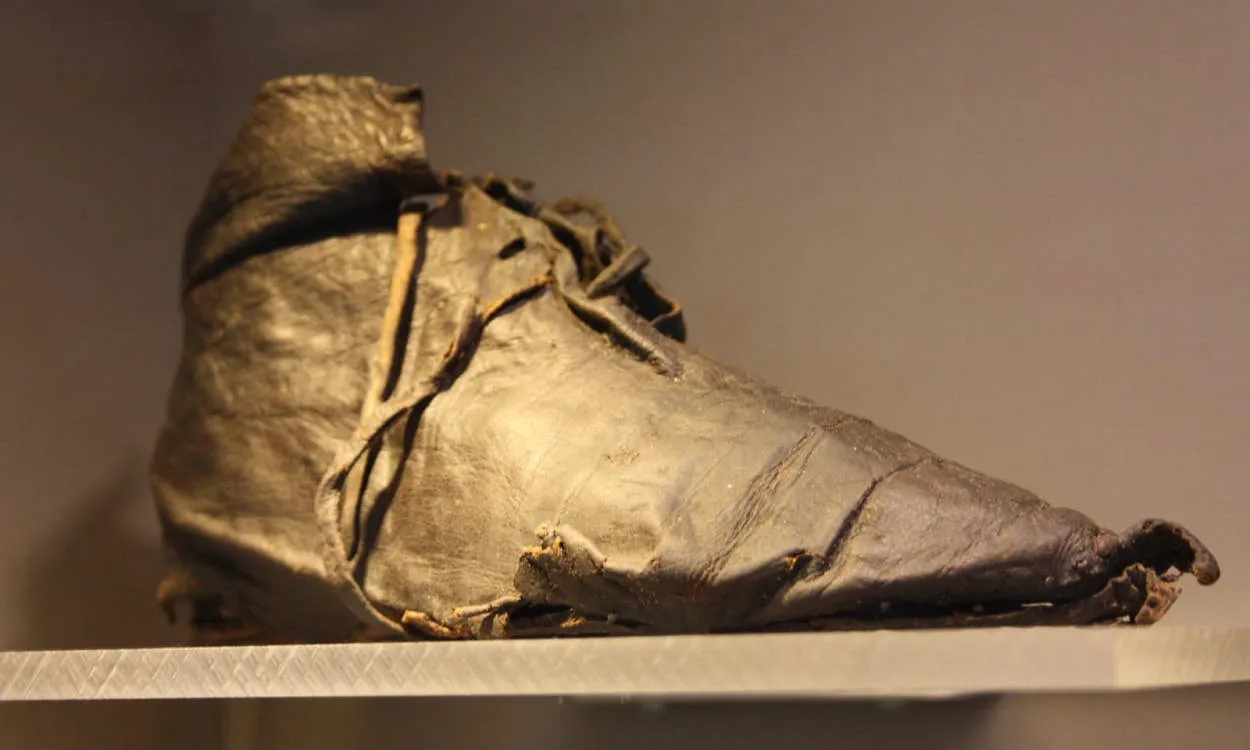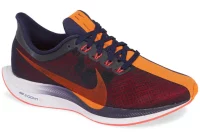Athletic footwear has come a long way over the years, evolving from basic sneakers to high-performance marvels. This article takes you on a journey through the history of athletic footwear, exploring how innovation and technology have transformed the way we run, jump, and excel in sports.
Historical Evolution of Athletic Shoes
Athletic footwear has come a long way throughout history, evolving to meet the needs and demands of athletes in various sports. The journey through time showcases significant advancements in comfort, design, and performance.
Early Origins
The origins of athletic shoes can be traced back to ancient civilizations, where early athletes sought ways to protect their feet during physical activities. Ancient Egyptians, for instance, wore rudimentary footwear made from woven papyrus or palm leaves to shield their feet while engaging in various sports.
19th Century Innovations
In the 19th century, major advancements in athletic footwear started to emerge. During this period, companies began to produce specialized shoes for specific sports. For example, spiked running shoes were introduced for track and field competitions, providing athletes with better traction.
Rise of Sneakers
The early 20th century marked the rise of sneakers, a term derived from “sneak,” which referred to the rubber soles’ quietness. Manufacturers began using rubber soles, canvas uppers, and vulcanization techniques, leading to the creation of more durable and comfortable athletic shoes.
Technological Innovations
The latter half of the 20th century witnessed significant technological advancements in athletic footwear. Brands started incorporating cushioning materials, such as air or gel, to provide shock absorption and enhance comfort. Foot support systems and motion control features were also introduced to minimize injuries and improve performance.
Modern Performance Enhancements
Today, athletic footwear continues to evolve with the integration of cutting-edge technologies. High-performance materials, like lightweight synthetic fabrics and carbon fiber plates, are now commonly used to enhance speed and agility. Additionally, advanced cushioning systems and moisture-wicking properties have become standard features in many athletic shoe designs.
Diverse Styles and Trends
In recent years, athletic shoes have become not only essential sports equipment but also fashion statements. The market offers a wide range of styles, colors, and collaborations with popular designers, catering to both athletes and casual wearers alike.
From humble beginnings to revolutionary designs, the historical evolution of athletic shoes has seen remarkable progress. The continuous advancements aim to provide athletes with the utmost comfort, support, and performance, ensuring that they can reach new heights in their sporting endeavors.
Iconic Shoe Models and Their Stories
In the world of athletic footwear, certain shoe models have become iconic, not only for their performance but also for the stories behind their development. These shoes have shaped the industry and left a significant impact on athletes and sneaker enthusiasts worldwide. Let’s take a journey through time and explore some of these iconic shoe models:
1. Nike Air Jordan
The Nike Air Jordan is perhaps the most recognizable basketball shoe of all time. Introduced in 1984, this shoe was designed exclusively for legendary basketball player Michael Jordan. The Air Jordan series revolutionized the market, combining cutting-edge technology with stylish design. Each edition of the Air Jordan line tells a story, reflecting Jordan’s achievements, personal moments, and cultural influences.
2. Adidas Superstar
The Adidas Superstar, also known as the “Shell Toe,” was first released in 1969. Initially designed for basketball, it quickly gained popularity as a lifestyle shoe in the 1970s. One of the shoe’s most notable moments came when hip-hop group Run DMC released the song “My Adidas” in 1986, solidifying the Superstar’s iconic status and paving the way for streetwear and sneaker culture.
3. Converse Chuck Taylor All Star
The Converse Chuck Taylor All Star, introduced in 1917, is the oldest shoe on this list. Named after basketball player Chuck Taylor, who became an ambassador for the brand, this shoe became synonymous with both basketball and rebellious counterculture. Its simple yet timeless design has made it a staple footwear choice for people of all ages and styles.
4. Reebok Classic Leather
The Reebok Classic Leather, released in 1983, is a versatile lifestyle shoe that has stood the test of time. With its clean and minimalistic design, this shoe became a go-to option for both casual and athletic wear. The Classic Leather’s popularity reached its peak in the 1980s, and it continues to be a beloved choice for sneaker enthusiasts today.
5. Puma Suede
The Puma Suede, introduced in 1968, played a significant role in the emergence of the hip-hop and streetwear culture. Originally a basketball shoe, it gained attention for its stylish suede upper and became an iconic sneaker in the 1970s. The Puma Suede’s timeless design and association with music and fashion have contributed to its enduring popularity over the years.
These are just a few examples of iconic shoe models that have left a lasting impact on the athletic footwear industry. Each shoe carries its own story, intertwining with the history of sports, music, and fashion. So, lace up your favorite pair and continue to be a part of these timeless tales.
The Cultural Significance of Sports Footwear
Sports footwear has become much more than just a functional item for athletic activities. It has evolved into a cultural phenomenon that reflects the changing trends, values, and aspirations of societies around the world. From the early beginnings to the present day, the journey of athletic footwear tells a captivating story of innovation, style, and symbolism.
In the early 20th century, sports footwear was primarily designed for practical purposes, focusing on support and protection. However, as sports gained popularity and became a significant part of popular culture, the importance of footwear as a fashion statement started to emerge. People began to associate themselves with their favorite sports teams and athletes, resulting in a desire to wear the same shoes as their idols.
One of the most iconic examples of this cultural significance is the basketball shoe, which skyrocketed in popularity thanks to legendary players like Michael Jordan. His endorsement deals with top shoe brands not only brought attention to the performance aspects of athletic footwear but also turned them into coveted fashion items. The Air Jordan series, for instance, became a symbol of urban coolness and athletic prowess.
Sports footwear also reflects the values and ideals of different subcultures. For example, skateboarding culture has its own distinctive footwear style, with brands like Vans and DC Shoes catering to the specific demands and aesthetics of skateboarders. These shoes have become an essential part of the skateboarding identity, representing rebellion, creativity, and individuality.
Furthermore, the rise of sneaker culture has brought sports footwear into the realm of street fashion. Collecting and displaying rare and limited-edition sneakers has become a passion for many enthusiasts. Sneakerheads create communities and engage in endless debates about the latest releases, collaborations, and design details, turning sports shoes into objects of desire and status symbols.
Overall, sports footwear has transcended its original purpose and become a powerful cultural symbol. It signifies not only athletic performance and functionality but also personal style, identity, and even social status. The evolution of sports footwear reflects the ever-changing dynamics of our society, serving as a mirror of our values, aspirations, and the diverse subcultures that shape our world.
Future Trends in Athletic Shoe Design
In the fast-evolving world of athletic footwear, staying ahead of the curve is crucial for brands to cater to the ever-changing needs of athletes and consumers. With advancements in technology and materials, here are some future trends to watch out for in athletic shoe design:
1. Customization for Enhanced Performance
Personalized footwear is gaining popularity, allowing athletes to customize their shoes based on individual preferences and biomechanical needs. This trend will expand further, incorporating advanced technologies such as 3D printing and smart fabrics to create bespoke shoes that optimize performance and reduce the risk of injury.
2. Sustainability and Eco-Friendly Materials
As environmental consciousness grows, so does the demand for sustainable athletic footwear. Brands are now focusing on using recycled materials, bio-based alternatives, and embracing eco-friendly manufacturing processes. This trend will continue to drive innovation in creating performance-driven shoes with minimal environmental impact.
3. Integration of Smart Technology
The future of athletic shoes lies in the integration of smart technology. From sensors that capture biometric data to shoe soles with embedded microchips, these intelligent features will provide real-time feedback on performance, stride analysis, and injury prevention. Smart shoes will revolutionize the way athletes train and compete.
4. Enhanced Comfort and Fit
Athletes demand shoes that offer maximum comfort and a perfect fit. Future designs will focus on advanced cushioning systems, breathable materials, and adaptive lacing technologies. By utilizing data-driven insights, shoe manufacturers will be able to create footwear that molds to the individual foot shape, ensuring optimal support and comfort.
5. Fashion-Forward Designs
Athletic footwear is not just about performance; it has become a fashion statement. Brands are embracing collaborations with fashion designers, celebrities, and artists to create visually stunning shoes that stand out both on and off the field. Future trends will continue to combine style and functionality, pushing the boundaries of shoe design.
In Conclusion
The future of athletic shoe design is an exciting and constantly evolving landscape. As technology continues to advance, the possibilities are endless. The trends mentioned above provide a glimpse into the potential direction of athletic footwear, where performance, sustainability, technology, comfort, and style will come together to create the next generation of athletic shoes.
How Athletic Footwear Influences Performance
Athletic footwear has evolved significantly over the years, with a relentless focus on performance enhancement. The role of athletic footwear in improving the performance of athletes cannot be understated. Sports shoe manufacturers continually invest in research and development to create footwear that maximizes performance and minimizes the risk of injury.
One key aspect of athletic footwear is its impact on stability and support. Shoes with appropriate cushioning provide shock absorption, reducing the strain on joints and minimizing the risk of injuries such as ankle sprains. Additionally, well-designed shoes with proper arch support can help distribute body weight evenly, improving overall stability.
Another crucial factor in athletic footwear is its influence on biomechanics. Different sports require specific movements, and footwear should accommodate these movements to optimize performance. For example, basketball shoes are designed to provide ankle support for quick direction changes, while running shoes have cushioning and flexibility tuned for forward propulsion.
Further, the material used in athletic footwear plays a fundamental role. Lightweight and breathable materials promote comfort and ventilation, essential for prolonged use during intense physical activities. Sweat-wicking properties help in preventing blisters and maintaining foot hygiene.
It is also essential for athletes to match their footwear to the playing surface. Shoes designed for specific surfaces, such as turf, track, or court, maximize traction and reduce the risk of slips and falls. This ensures optimal performance while minimizing the chances of injury.
Overall, athletic footwear significantly influences an athlete’s performance. From providing stability and support to optimizing biomechanics and choosing the right materials, every aspect is carefully engineered to enhance an athlete’s abilities. The continuous innovation and attention to detail in athletic footwear have revolutionized the sports industry, allowing athletes to perform at the highest level.
Conclusion
Athletic footwear has come a long way throughout history, evolving from basic leather sandals to technologically advanced and specialized sports shoes. The journey of athletic footwear is a testament to the continuous innovation and adaptation to meet the needs and demands of athletes. With each generation, improvements in design, materials, and comfort have been made to enhance performance and protect the feet from injuries. As we move forward, it is exciting to see how athletic footwear will continue to evolve and revolutionize the world of sports.




